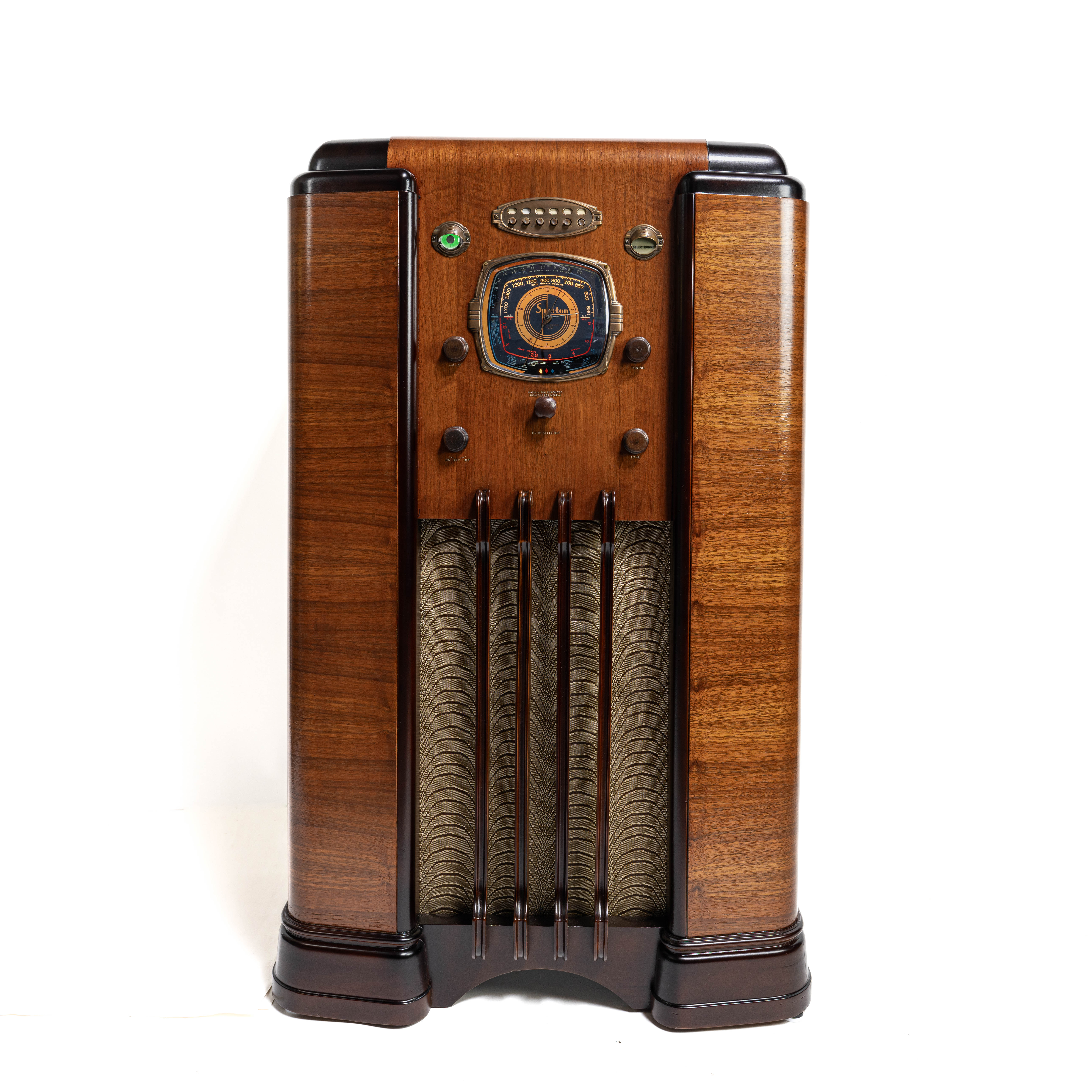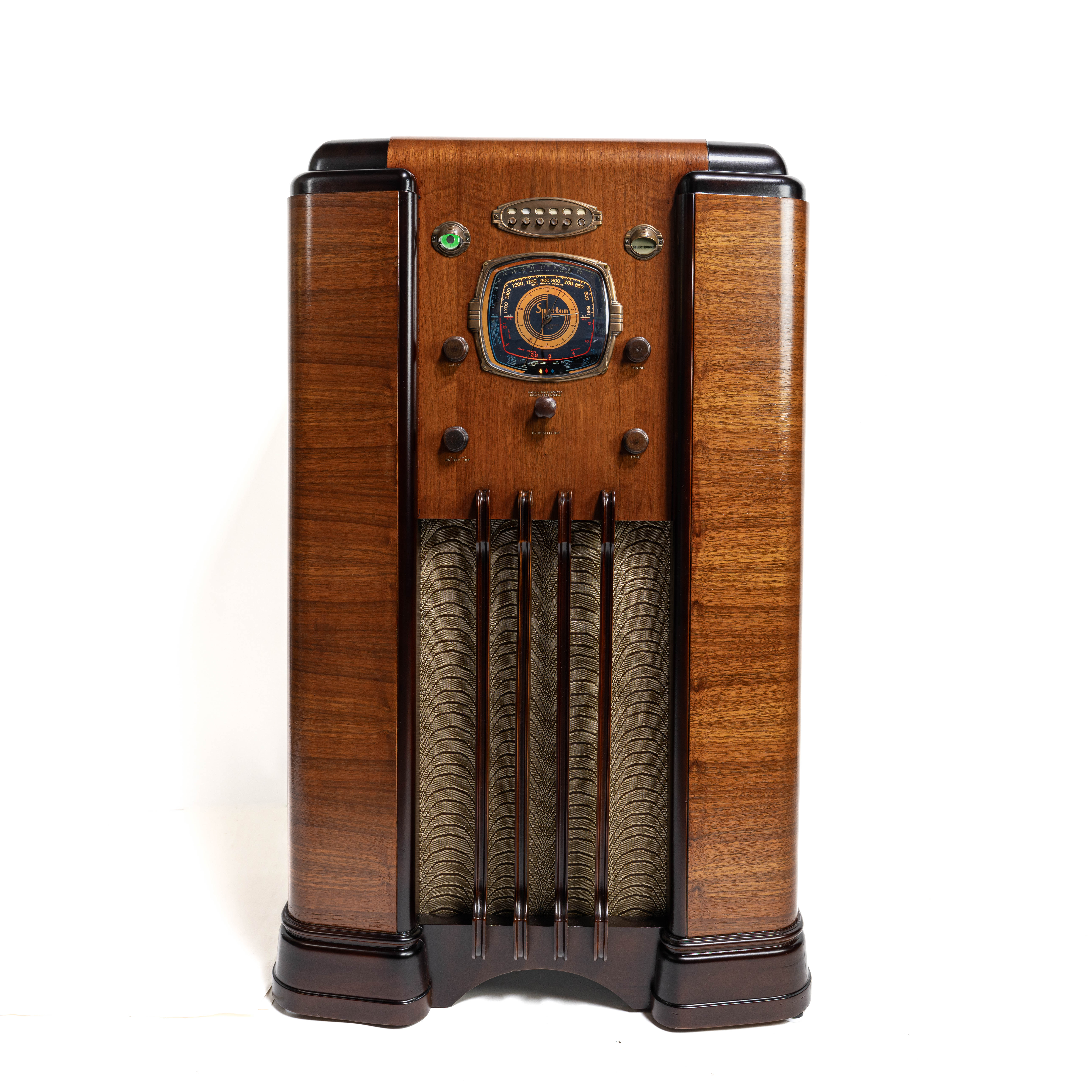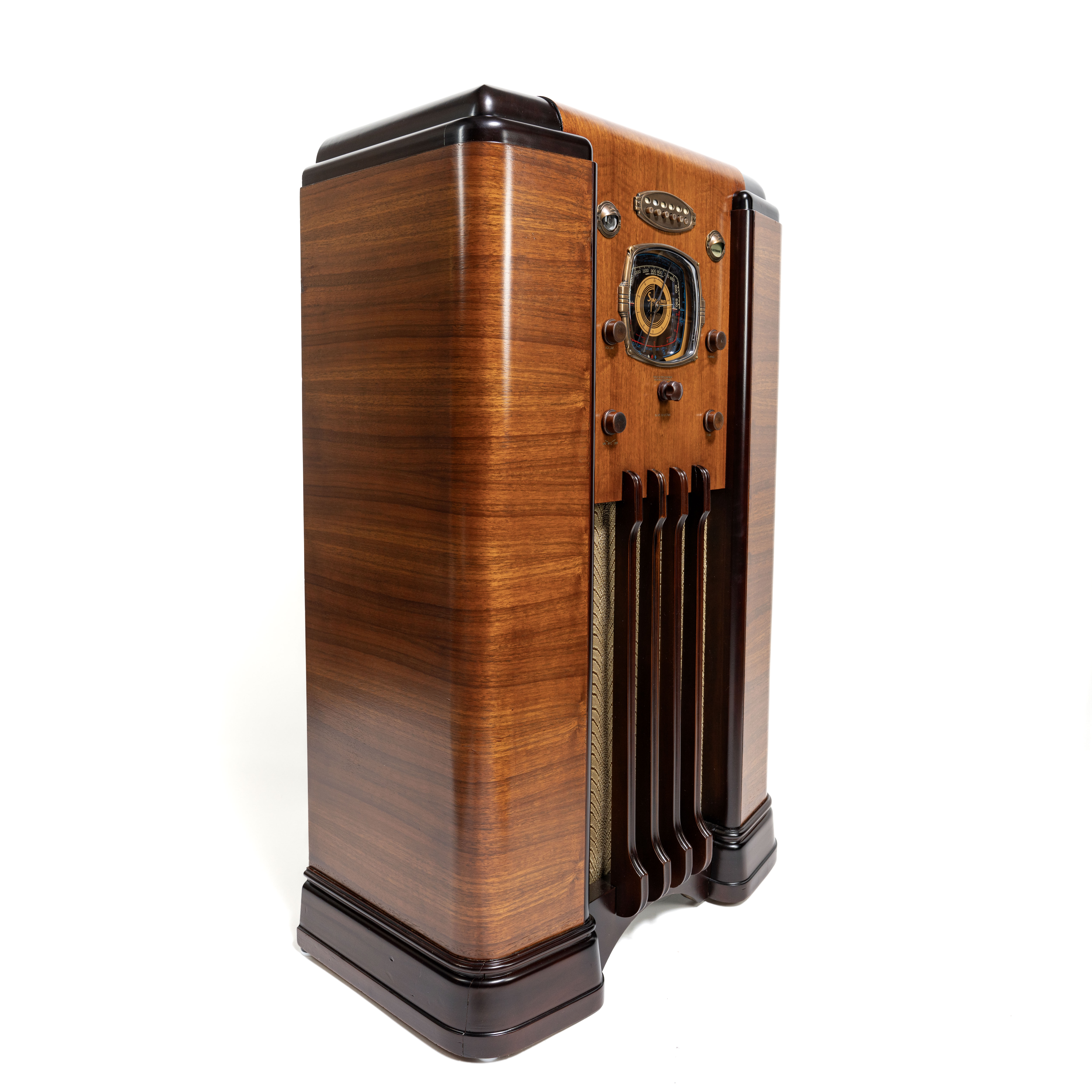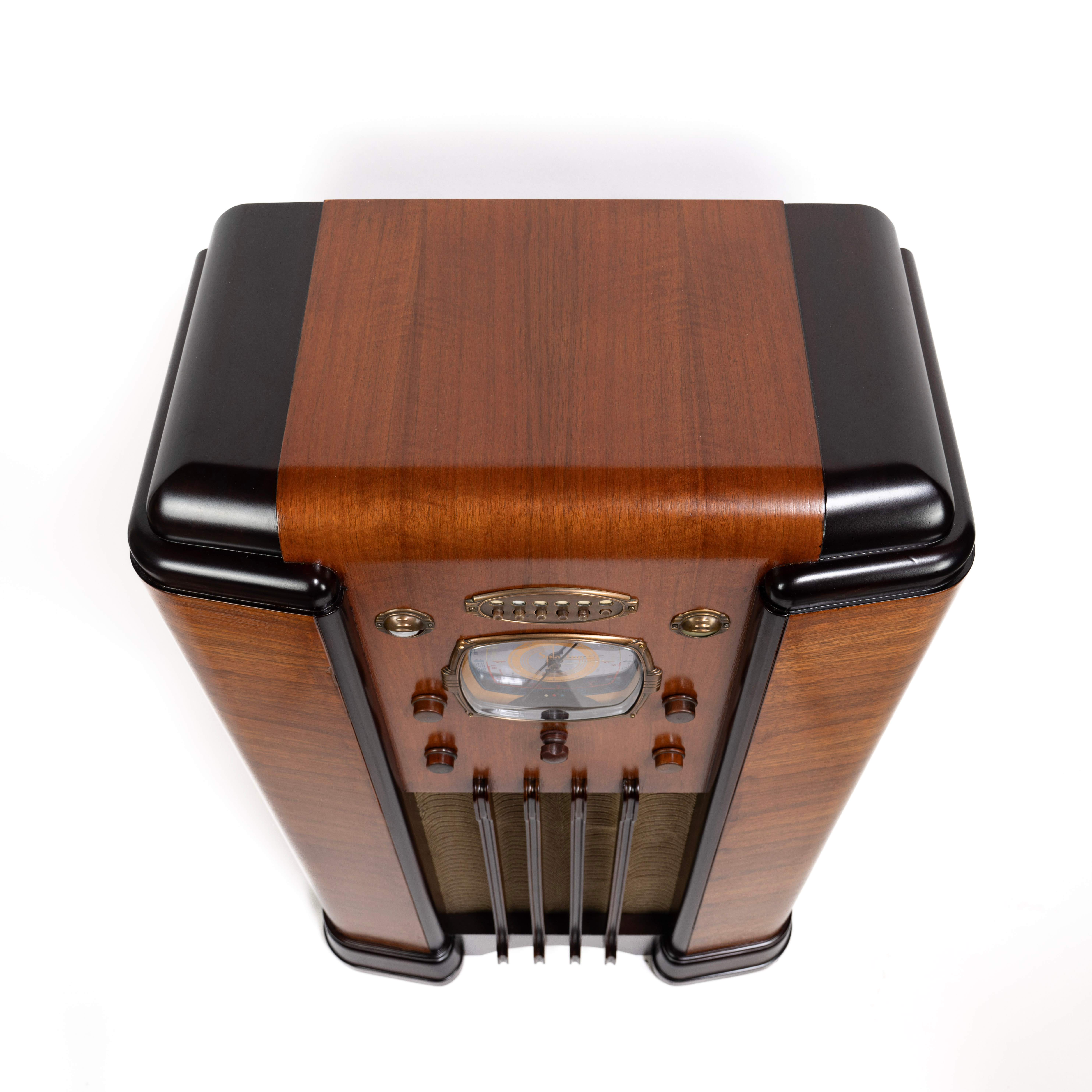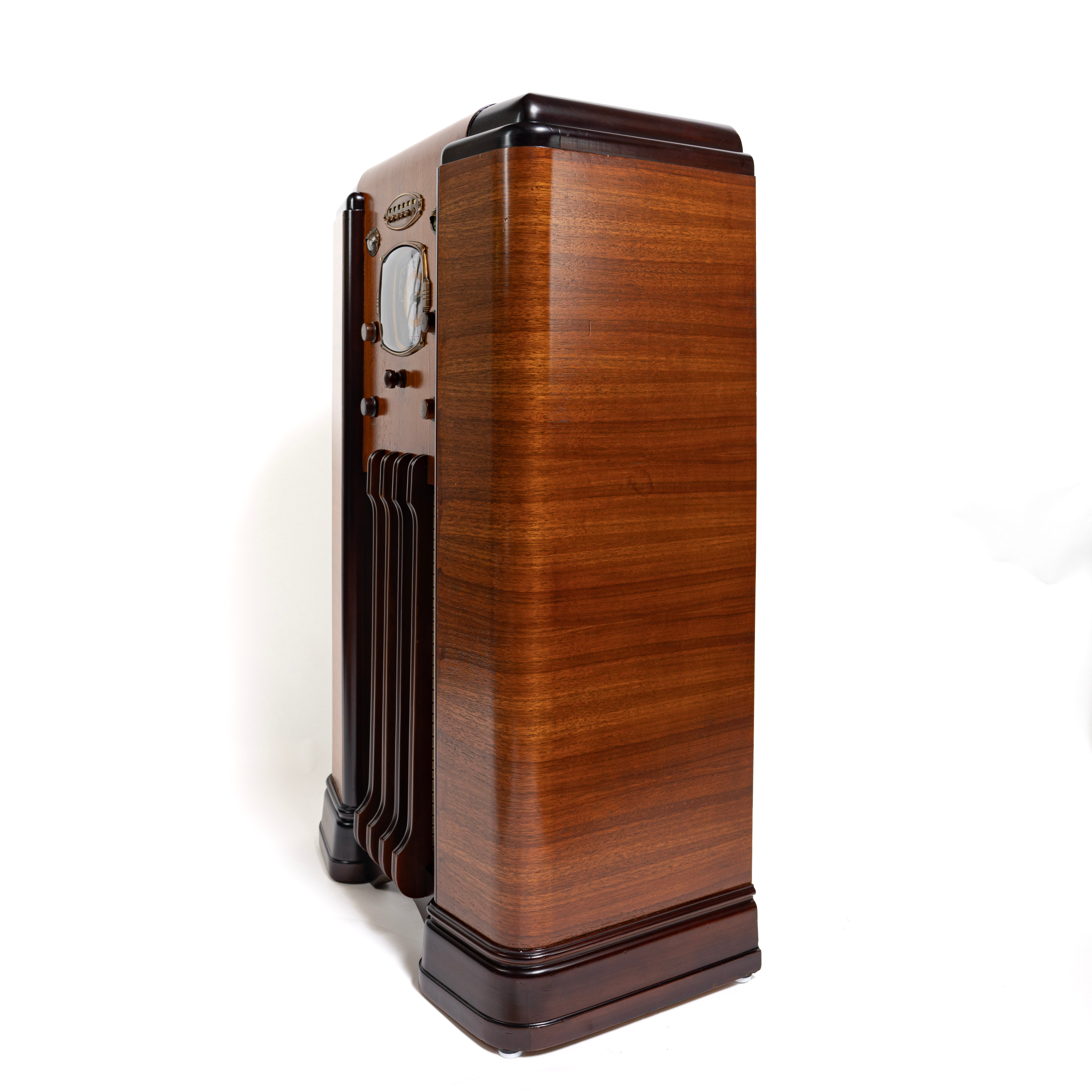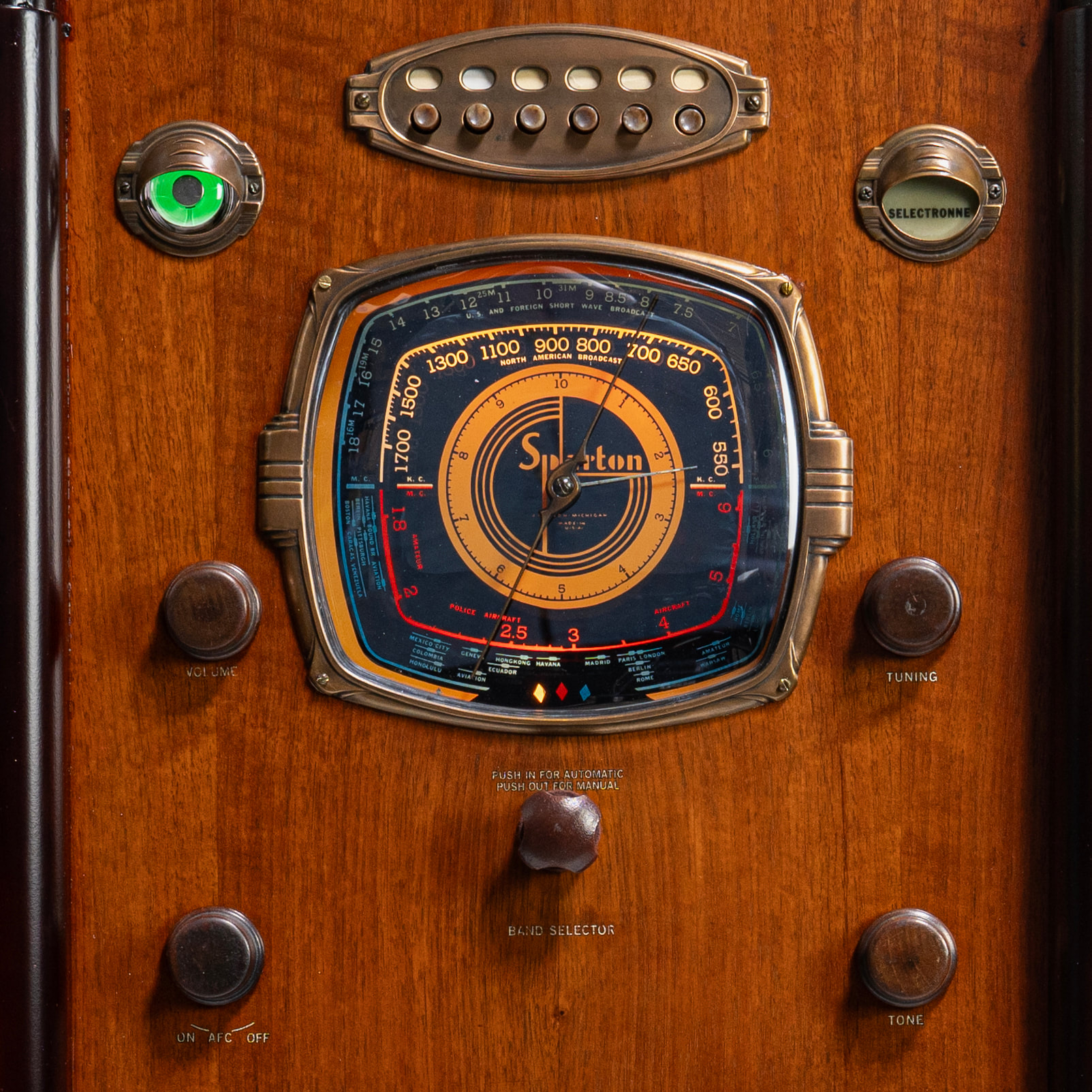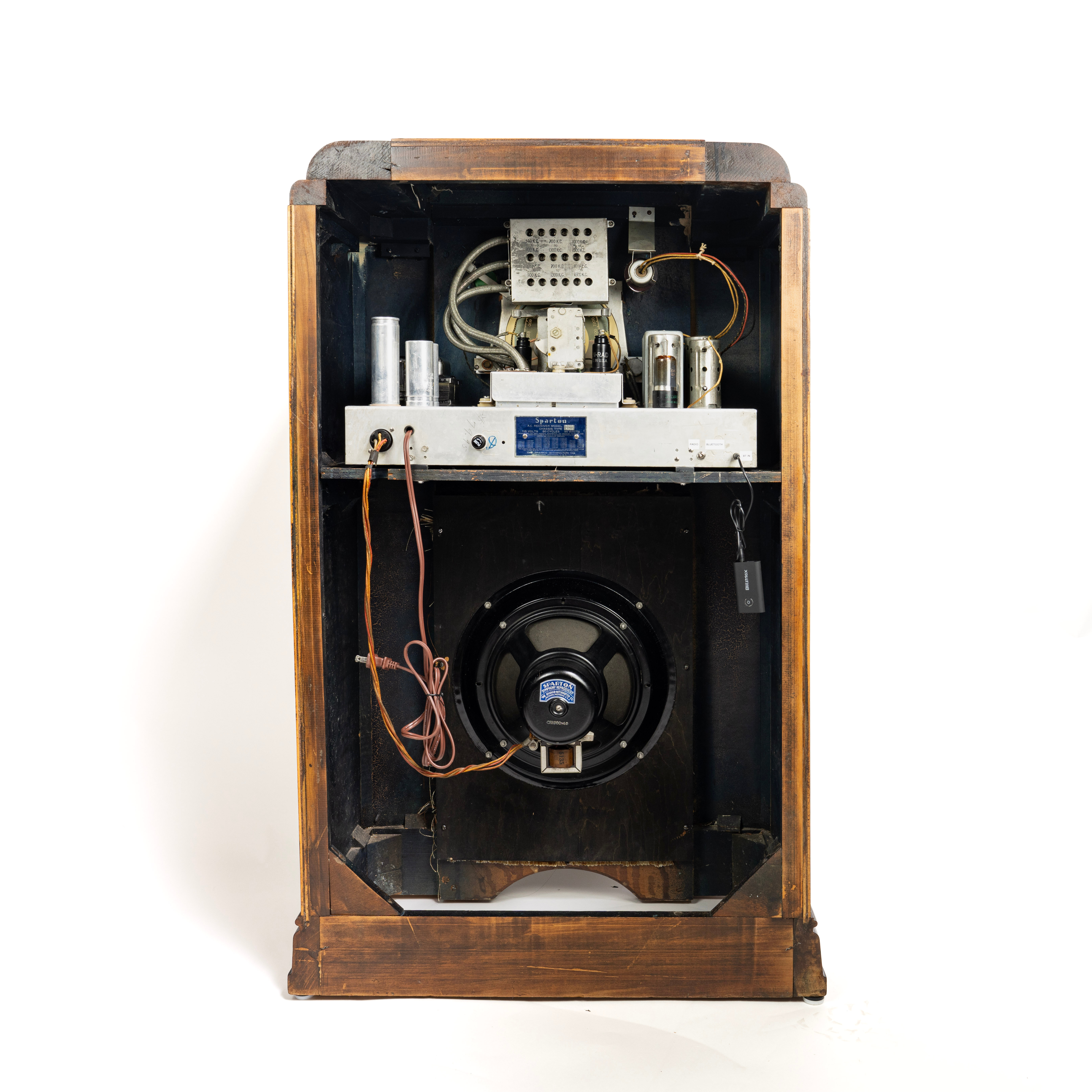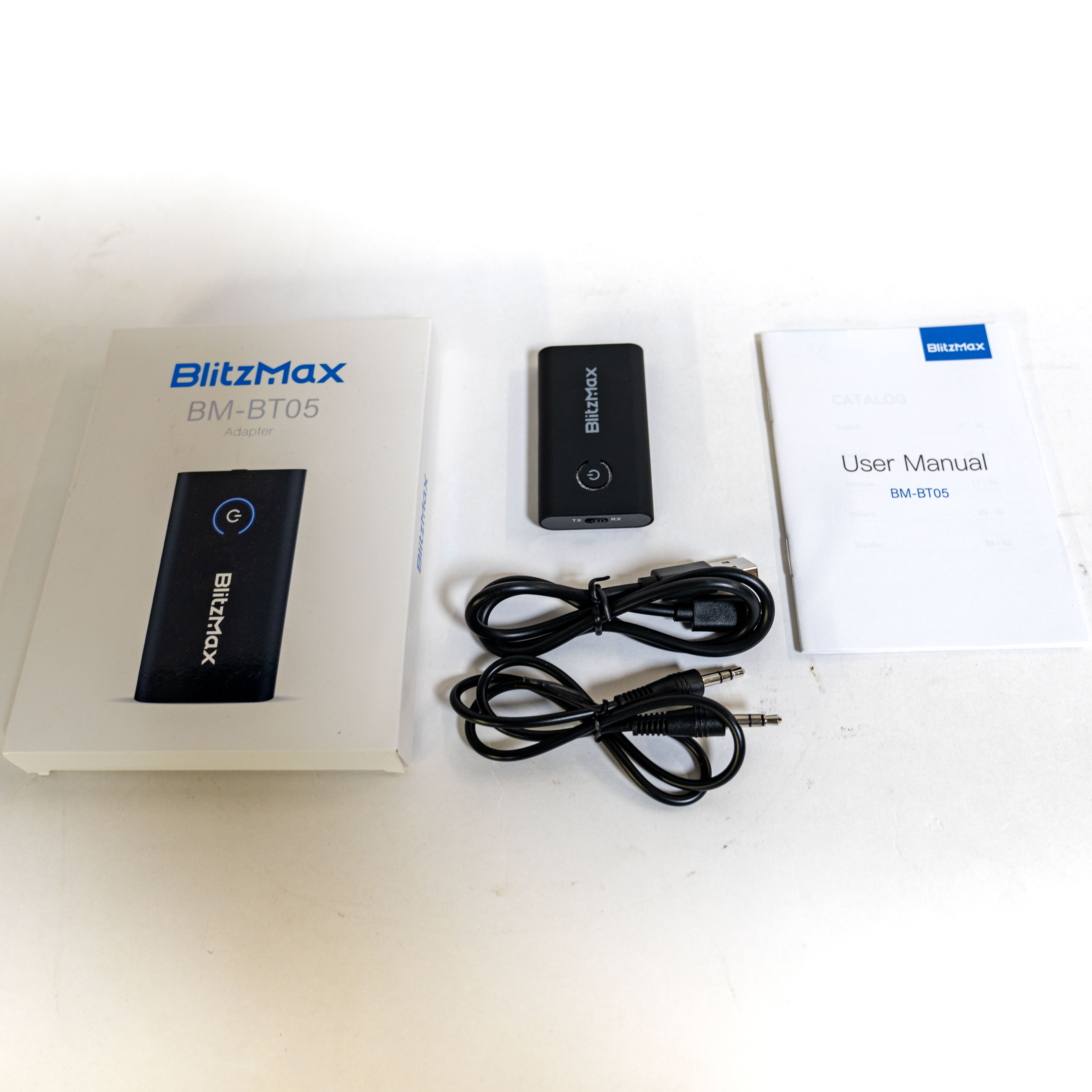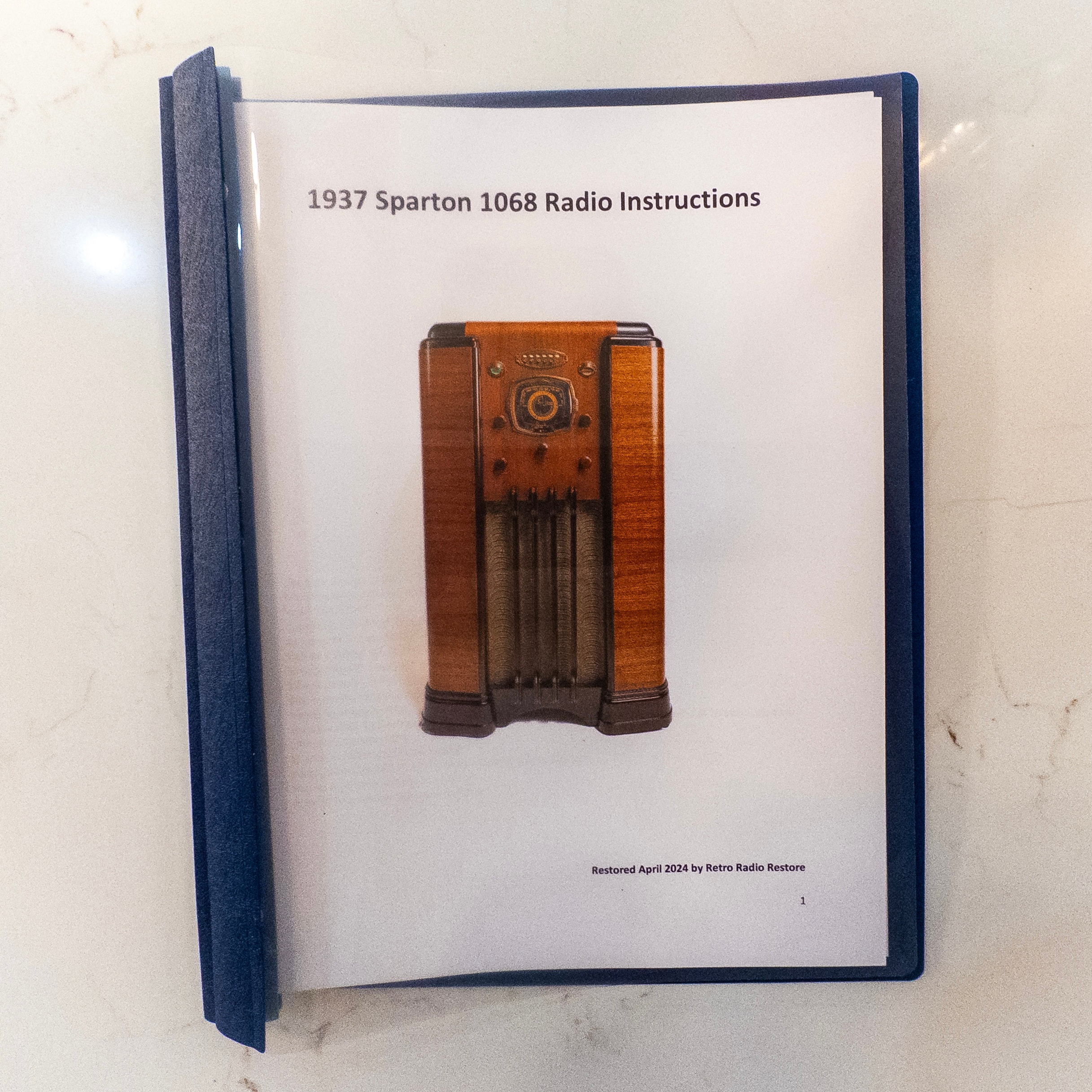- Radios
- >
- Sparton 1068 Console (1937)
Sparton 1068 Console (1937)
SKU:
$2,000.00
$2,000.00
Unavailable
per item
SOLD
This beautiful 1937 Sparton 1068 Selectronne console radio has been professionally restored and is an excellent example of American industrial craftsmanship from a bygone era. This is one of Sparton’s most famous and collectible models. It is a ten-tube, three-band radio sporting a backlight multicolored glass dial, and the innovative “Selectronne” push-button tuning mechanism. It has a green ‘magic-eye’ tuning indicator and a big 10-inch speaker. The cabinet, with its skyscraper shoulders, exemplifies is Art Deco design. The cabinets’ walnut veneers and solid wood corners are beautifully refinished with an impeccable satin lacquer finish. This is our second restoration of this model radio. This one has a complete electronic restoration and be retrofitted with our exclusive Bluetooth / MP3 input.
History – Sparton brand radios were produced by the Sparks-Withington Co. of Jackson Michigan. Originally involved in the manufacturing of automotive parts (particularly horns and radiator fans), the company had been formed in 1900 by General W. H. Withington and his sons Philip and Winthrop. William Sparks, a young immigrant from England joined the company shortly after it was formed.
Radio production was added to the company in 1925. Even though they made exceptional units, Sparton was not particularly successful in the radio business after 1930, but continued to produce radios and TVs until 1956, when some of its assets were sold to Magnavox to form the "Spartan" (note different spelling) division of Magnavox. The name of the company changed from Sparks-Withington to Sparton Corporation. in 1956, and it continues as a successful company today, making a variety of products in aerospace, defense, medical, and other product lines
The Sparton 1068 was first introduced in the fall of 1937 as part of Sparton’s line-up of new models for 1938. Its introductory price was $124.95. Today, this attractive radio is sought after by collectors but seldom found to this near perfect condition. We acquired this one in early 2019 from a private sale. The cabinet was in good shape but had the original finish. The chassis was working but needed a full restoration and upgrade.
Cabinet – The cabinet got a complete restoration. It is as close to perfection as you can get. We stripped the original finish and toned the top and front shoulders, speaker slats and footer with an ebony stain. The entire cabinet was sealed with a flat satin lacquer. This made the original veneers solid wood grains pop. We added period correct grille cloth and refinished the original control knobs lacquer. The result is this handsome looking radio that will last many, many years into the future.
Dial – The multicolored backlight glass dial was in great condition. However, we wanted to make sure it lasts another 80 years, so we sealed the back of it with clear semi-loss lacquer. The rest of the dial was dissembled, cleaned, lubricated, aligned, and reassembled. The cabinet dial plastic was in bad shape, so we replaced it with a modern, clearer reproduction. The surrounding brass escutcheon was cleaned only enough to keep the original patina well into the future.
Chassis – There is nothing flimsy about this chassis. Everything is industrial strength. We went through the entire underside of the chassis replacing all the capacitors, checking, and replacing resistors and wires where needed. We took extra steps and worked with the top expert at the California Historical Radio Society to ensure this radio produces no hum. It now plays very well across the dial and all bands even with the simplest of external antennas. All tubes were checked and replaced where needed with NOS (new old stock) tubes. We disassembled, cleaned, and lubricated the main tuning capacitor for smooth tuning operation. We replaced the old rubber tuning belt and new polyurethane one. A new power cord, fuse and voltage dropping resistor were installed for electrical safety. New silicone rubber chassis mounts were added for better vibration isolation. We added an auxiliary input and switch on the back and aligned the radio for the Bluetooth adapter.
Speaker – Even though it performed well, we had the all-original 10-inch speaker cleaned and reinforced. The result is clear audio across the entire audio frequency range. The speaker sits on a metal baffle which expands the opening to 12-inches. This radio produces exceptional bass tones, and the great sound will fill the room.
Bluetooth - Additionally, this radio has been internally fitted with our custom Bluetooth / MP3 adapter which allows you to switch between the radio or your smartphone or music device. Access your streaming audio service or the playlist on your smart device to provide classic tunes and bring the warm, bright, analogue sound to any music or recording you choose. The quality of the sound is excellent. You will have the best of “digital” and “analogue” combined.
Year of Manufacture: 1938/1939
Band Frequency Ranges:
AM Broadcast Band..............550 – 1700 KHz
Shortwave Band 1……………….1.8 – 6.2 MHz
Shortwave Band 2……………….6.0 – 18 MHz
Dimensions: 25”W x 42”H x 14” D
Weight: 70 pounds
See demonstration on YouTube here: youtu.be/3X5BCcm2C5o
History – Sparton brand radios were produced by the Sparks-Withington Co. of Jackson Michigan. Originally involved in the manufacturing of automotive parts (particularly horns and radiator fans), the company had been formed in 1900 by General W. H. Withington and his sons Philip and Winthrop. William Sparks, a young immigrant from England joined the company shortly after it was formed.
Radio production was added to the company in 1925. Even though they made exceptional units, Sparton was not particularly successful in the radio business after 1930, but continued to produce radios and TVs until 1956, when some of its assets were sold to Magnavox to form the "Spartan" (note different spelling) division of Magnavox. The name of the company changed from Sparks-Withington to Sparton Corporation. in 1956, and it continues as a successful company today, making a variety of products in aerospace, defense, medical, and other product lines
The Sparton 1068 was first introduced in the fall of 1937 as part of Sparton’s line-up of new models for 1938. Its introductory price was $124.95. Today, this attractive radio is sought after by collectors but seldom found to this near perfect condition. We acquired this one in early 2019 from a private sale. The cabinet was in good shape but had the original finish. The chassis was working but needed a full restoration and upgrade.
Cabinet – The cabinet got a complete restoration. It is as close to perfection as you can get. We stripped the original finish and toned the top and front shoulders, speaker slats and footer with an ebony stain. The entire cabinet was sealed with a flat satin lacquer. This made the original veneers solid wood grains pop. We added period correct grille cloth and refinished the original control knobs lacquer. The result is this handsome looking radio that will last many, many years into the future.
Dial – The multicolored backlight glass dial was in great condition. However, we wanted to make sure it lasts another 80 years, so we sealed the back of it with clear semi-loss lacquer. The rest of the dial was dissembled, cleaned, lubricated, aligned, and reassembled. The cabinet dial plastic was in bad shape, so we replaced it with a modern, clearer reproduction. The surrounding brass escutcheon was cleaned only enough to keep the original patina well into the future.
Chassis – There is nothing flimsy about this chassis. Everything is industrial strength. We went through the entire underside of the chassis replacing all the capacitors, checking, and replacing resistors and wires where needed. We took extra steps and worked with the top expert at the California Historical Radio Society to ensure this radio produces no hum. It now plays very well across the dial and all bands even with the simplest of external antennas. All tubes were checked and replaced where needed with NOS (new old stock) tubes. We disassembled, cleaned, and lubricated the main tuning capacitor for smooth tuning operation. We replaced the old rubber tuning belt and new polyurethane one. A new power cord, fuse and voltage dropping resistor were installed for electrical safety. New silicone rubber chassis mounts were added for better vibration isolation. We added an auxiliary input and switch on the back and aligned the radio for the Bluetooth adapter.
Speaker – Even though it performed well, we had the all-original 10-inch speaker cleaned and reinforced. The result is clear audio across the entire audio frequency range. The speaker sits on a metal baffle which expands the opening to 12-inches. This radio produces exceptional bass tones, and the great sound will fill the room.
Bluetooth - Additionally, this radio has been internally fitted with our custom Bluetooth / MP3 adapter which allows you to switch between the radio or your smartphone or music device. Access your streaming audio service or the playlist on your smart device to provide classic tunes and bring the warm, bright, analogue sound to any music or recording you choose. The quality of the sound is excellent. You will have the best of “digital” and “analogue” combined.
Year of Manufacture: 1938/1939
Band Frequency Ranges:
AM Broadcast Band..............550 – 1700 KHz
Shortwave Band 1……………….1.8 – 6.2 MHz
Shortwave Band 2……………….6.0 – 18 MHz
Dimensions: 25”W x 42”H x 14” D
Weight: 70 pounds
See demonstration on YouTube here: youtu.be/3X5BCcm2C5o
